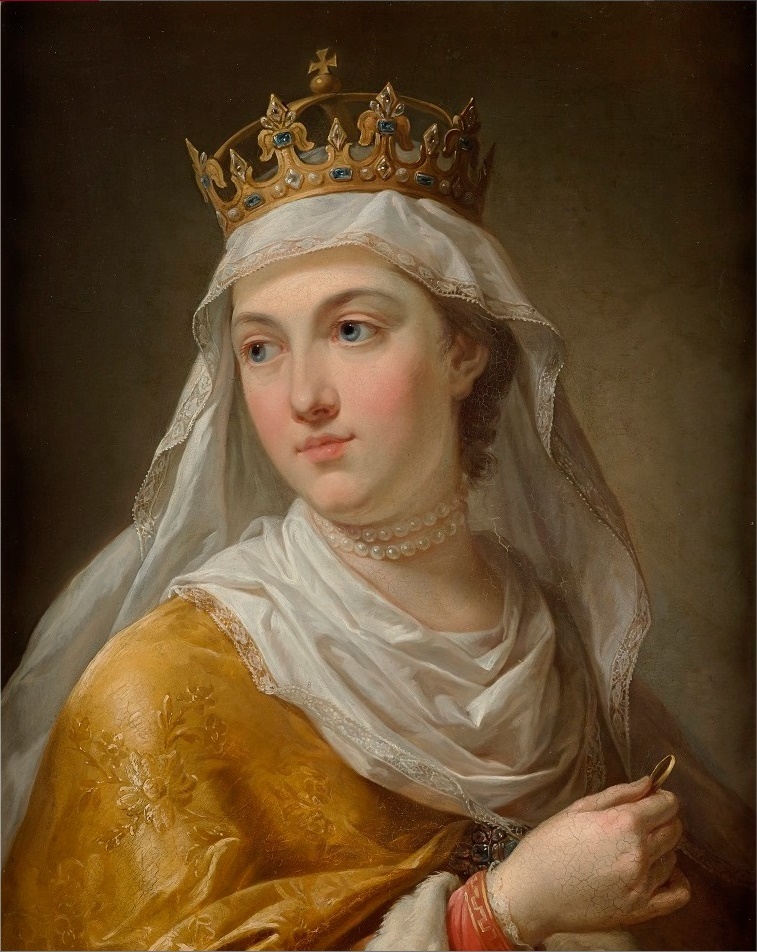Queens Crown on:
[Wikipedia]
[Google]
[Amazon]
 The Queen's Crown (Polish: "korona królowych" or "korona Jadwigi kaliskiej") was a part of the
The Queen's Crown (Polish: "korona królowych" or "korona Jadwigi kaliskiej") was a part of the
 The Queen's Crown (Polish: "korona królowych" or "korona Jadwigi kaliskiej") was a part of the
The Queen's Crown (Polish: "korona królowych" or "korona Jadwigi kaliskiej") was a part of the Polish Crown Jewels
The only surviving original piece of the Polish Crown Jewels ( pl, Polskie Klejnoty Koronne) from the time of the Piast dynasty is the ceremonial sword – Szczerbiec. It is currently on display along with other preserved royal items at the W ...
until it was destroyed in 1809. It was mentioned for the first time in the inventory of the Wawel
The Wawel Royal Castle (; ''Zamek Królewski na Wawelu'') and the Wawel Hill on which it sits constitute the most historically and culturally significant site in Poland. A fortified residency on the Vistula River in Kraków, it was established o ...
Royal Treasury in the 15th century.
History
The Polish Queen's coronation insignia were originally made forJadwiga of Kalisz
Jadwiga of Kalisz ( Polish: ''Jadwiga kaliska'' (''Bolesławówna)''; 1266 – 10 December 1339) was a Queen of Poland by marriage to Ladislaus the Short. She was the mother of the last Piast King of Poland, Casimir III.
She was the second of thr ...
, wife of Władysław I the Elbow-high Władysław is a Polish given male name, cognate with Vladislav. The feminine form is Władysława, archaic forms are Włodzisław (male) and Włodzisława (female), and Wladislaw is a variation. These names may refer to:
Famous people Mononym
* ...
in 1320, intended for her coronation as a Queen consort of Poland. Since that time it served as the main insignium of the Polish Queens till the end of the 17th century.
The crown was stolen from the Wawel Castle by the Prussian troops in 1794 and found its place in the collections of the Hohenzollerns
The House of Hohenzollern (, also , german: Haus Hohenzollern, , ro, Casa de Hohenzollern) is a German royal (and from 1871 to 1918, imperial) dynasty whose members were variously princes, electors, kings and emperors of Hohenzollern, Brandenb ...
in Berlin. After 1809 it was destroyed and melted down just as the majority of Polish regalia.
The Queen's Crown consisted of eight segments each crowned with heraldic fleur-de-lis
The fleur-de-lis, also spelled fleur-de-lys (plural ''fleurs-de-lis'' or ''fleurs-de-lys''), is a lily (in French, and mean 'flower' and 'lily' respectively) that is used as a decorative design or symbol.
The fleur-de-lis has been used in the ...
and interspersed with smaller pinnacles. It was made of pure gold
Gold is a chemical element with the symbol Au (from la, aurum) and atomic number 79. This makes it one of the higher atomic number elements that occur naturally. It is a bright, slightly orange-yellow, dense, soft, malleable, and ductile me ...
in the form of the rims covered with the globe and a cross on their intersection. The 18th century surveys of the Wawel Royal Treasury indicate that it was decorated with 40 rubies, 40 sapphires and 63 pearls. The 16th century inventory shows, however, that the crown has been much richer in precious stones for some time, and that their number was greater than those placed on the Crown of Bolesław I the Brave
The Crown of Bolesław I the Brave (in Polish ''korona Chrobrego'', also known in Latin as the ''corona privilegiata'') was the coronation crown of the Polish monarchs.
History
The exact origins of the Polish crown are unknown. According ...
. In the 18th century the crown was depicted in the portrait of Saint King
King is the title given to a male monarch in a variety of contexts. The female equivalent is queen, which title is also given to the consort of a king.
*In the context of prehistory, antiquity and contemporary indigenous peoples, the tit ...
Jadwiga of Poland
Jadwiga (; 1373 or 137417 July 1399), also known as Hedwig ( hu, Hedvig), was the first woman to be crowned as monarch of the Kingdom of Poland. She reigned from 16 October 1384 until her death. She was the youngest daughter of Louis the Grea ...
by Marcello Bacciarelli
Marcello Bacciarelli (; 16 February 1731 – 5 January 1818) was a Polish- Italian painter of the late-baroque and Neoclassic periods.
Biography
He was born in Rome, and studied there under Marco Benefial. In 1750, with the recommendation of t ...
, painted to embellish the Marble Room at the Royal Castle in Warsaw.
References
Further reading
* Jerzy Lileyko. ''Regalia Polskie''. Warszawa 1987. * Janusz Miniewicz. ''Tajemnica polskich koron. Czy jest szansa ich odnalezienia?''. Nowy Sącz 2006. * Michał Rożek. ''Polskie koronacje i korony''. Kraków 1987.External links
{{Crowns Individual crowns Polish crown jewels Medieval crowns Material culture of royal courts